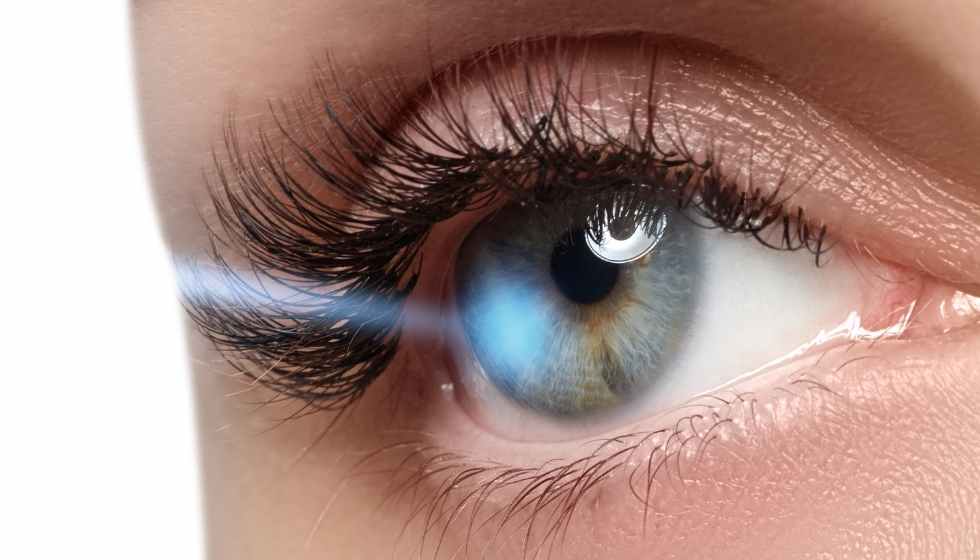The first glasses records date back to the 13th century, but they only worked with farsightedness. Glasses that help with myopia appeared three centuries later. And for a long time, they remained the only way to improve the lives of people with visual impairments.
A breakthrough happened in 1889 – contact lenses were invented, which until the 1960s were made of glass. But science does not stand still, and now ophthalmologists have the opportunity to not only help you see better: laser correction is a way to restore one hundred percent vision. Let’s talk about how it works.
Why Do We See Badly?
To understand the principle of laser vision correction, you must understand how myopia, hyperopia, and astigmatism occur. The reasons can be different: genetics, diseases, lifestyle. But in the end, it all comes down to one thing – our eye forms a picture incorrectly. Let’s look at the main factors.
Eyeball Shape
Usually, the eyeball has the shape of a sphere. Rays passing through the cornea are refracted by the lens, forming an image on the retina. If the eyeball is elongated, flattened, or irregular in shape, the image is formed in front of the retina, behind it, or curved.
Wrong Refraction of Rays
In this case, due to the characteristics of the lens and the cornea, the rays are refracted in front of/behind the retina, and vision problems occur even with the correct shape of the eyeball.
Problems with the Eye Muscles
For the image to form correctly, the lens must be elastic. And here, the work of the eye muscles is essential, and their ability to change the lens’s curvature is called the eye’s accommodation.
Presbyopia. It often occurs with age (usually from 40-45 years old) and is a physiological condition – the muscles weaken, and the lens loses its elasticity. Unfortunately, it is impossible to exclude the occurrence of presbyopia completely, but it is possible to delay its development.
Spasm, tension, weakness, paralysis of accommodation. Regardless of the cause and age, improper functioning of the ciliary muscle leads to a loss of lens elasticity. Sometimes, vision returns to normal with therapy, but it cannot restore the ciliary muscle, and the quality of vision is reduced.
How to Correct Vision with Glasses and Lenses
The lenses shift the image’s focus, making it possible to form an appearance on the retina. There are glasses – the picture is clear, no glasses – blurry.
How Does Laser Vision Correction Work?
The laser vision correction technology is based on the modification of the shape of the eye’s cornea – thanks to this approach, image clarity is ensured without any additional accessories. Its essence lies in the shape of the eye’s cornea changes so that when the rays are refracted in the lens, the image is formed precisely on the retina. That is, the cornea begins to perform the function of glasses or lenses.
History of Technology Development
The first laser vision correction was carried out in 1985 in Berlin using the PRK method (photorefractive keratectomy). It consisted of the fact that under the influence of the laser, the cornea’s outer layer evaporated to correct the wrong focus.
The technique of the ball was revolutionary, but the recovery period turned out to be lengthy – restoring the cornea’s surface layer was corrected in 2-4 days, and it took up to 4 weeks for complete adaptation.
In 1989, a new LASIK technology appeared, thanks to which the impact went to the middle layers of the cornea. This made it possible to reduce the recovery period to 2–3 hours and increase the efficiency and safety of treatment. However, there was still a risk of postoperative visual distortions since the corneal flap was formed using a mechanical keratome.
In 1999, the femtosecond laser was invented (the developers were awarded the Nobel Prize), and in 2001, it was used in ophthalmology. And now, modern laser vision correction involves using a femtosecond laser. It generates ultra-short pulses, allowing you to create the thinnest corneal flap.
How Secure is the Technology
After the invention of the femtosecond laser, a new era in treating visual impairments began because doctors had the opportunity to form a corneal flap, not by mechanical means but non-contact, which minimized postoperative complications.
The procedure is performed under local anesthesia (eye drops) and lasts 10-15 minutes. When using modern non-contact equipment, intervention is as safe as possible. For example, the Intralase femtosecond unit with the latest generation excimer laser VISX Star S4 IR is used in the EMC ophthalmological clinic for laser vision correction. Discomfort after surgery on such a device disappears in 2-3 hours.
How Can Vision Problems be Treated With Laser Eye Surgery?
It is possible to restore vision by 100% if it is diagnosed:
myopia up to -20;
farsightedness up to +6;
astigmatism up to -6.
Correction is carried out for people from 18 to 65 years.
What Guarantees the Accuracy of Treatment
You need the correct diagnosis, proper equipment, and an experienced doctor to restore vision. Therefore, when choosing a clinic, you must evaluate all three parameters. For example, in the EMC clinic, these issues are resolved as follows:
Diagnostics is carried out on a particular device Abbot iDesign Advanced – the only one in Russia. In the process, an eye map (WaveScan map) is created, based on which individual correction parameters are calculated.
The map is transferred to the VISX Star S4 IR excimer laser, which allows precise cornea treatment. Another advantage of this laser is the presence of an eye-tracking tracking system. The set beam algorithm is maintained thanks to tracking, even if the patient’s eyes move.
The software controls the operation of the beam at each point, eliminating the error.
Performs operations c.m.s. Raid Elias (head of the clinic) has more than 9,000 laser surgeries, including Russia’s first correction of age-related farsightedness.
You can evaluate the results by seeing the world in its glory without glasses and lenses the next day. At the same time, the risk of postoperative complications is minimized.


